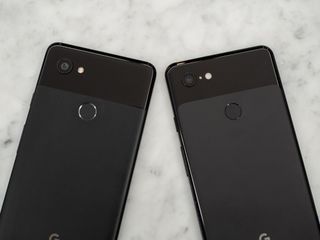Speech-to-text on Pixel phones is gaining offline support and lower latency

Whether you're running errands, driving, or have difficulty typing on a touchscreen, speech-to-text can be an incredibly helpful feature. It's something that's gotten a lot better over the years, but it can still have its pitfalls.
On its Google AI Blog, Google announced that Pixel phones which are set to English will soon see noticeable improvements with the performance of their speech-to-text abilities.
Typically, speech-to-text needs to communicate with a server in order to understand, process, and spit out the words you're saying into text form. This means that, while you're talking, there's often a delay between what you're saying and the text being written on your phone. Harnessing the power of an all-neural, on-device speech recognizer, however, Google is able to eliminate this latency so that the words you're saying are added in real-time.
This means no more network latency or spottiness — the new recognizer is always available, even when you are offline. The model works at the character level, so that as you speak, it outputs words character-by-character, just as if someone was typing out what you say in real-time, and exactly as you'd expect from a keyboard dictation system.

In addition to faster transcribing, the speech recognizer also allows speech-to-text to work 100% offline. No matter if you're in an area with spotty network coverage or you aren't near Wi-Fi, speech-to-text will still work no matter what.
As mentioned above, this is rolling out now to all Pixel smartphones that are set to American English.
Be an expert in 5 minutes
Get the latest news from Android Central, your trusted companion in the world of Android
Joe Maring was a Senior Editor for Android Central between 2017 and 2021. You can reach him on Twitter at @JoeMaring1.

